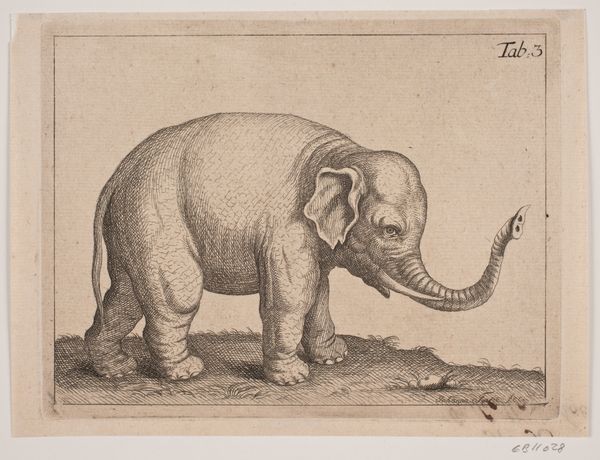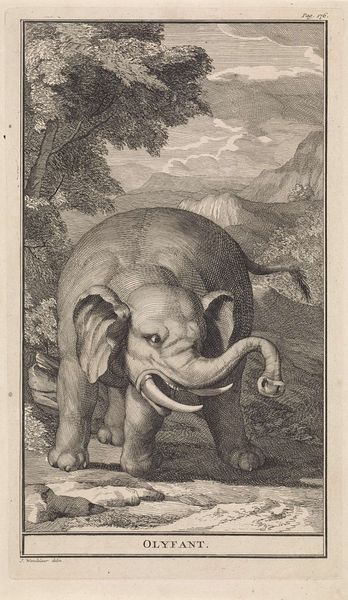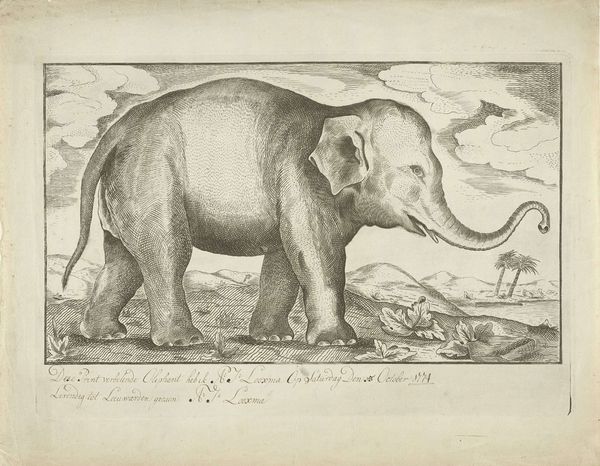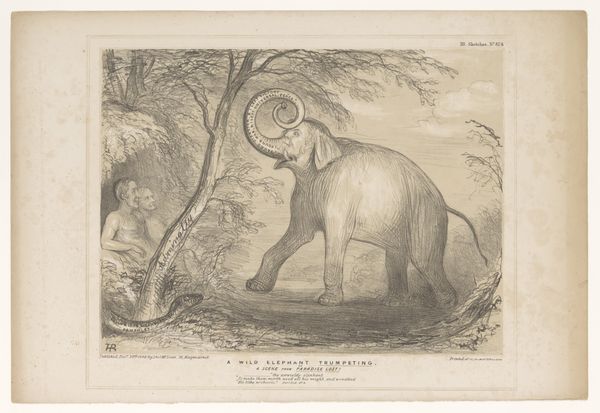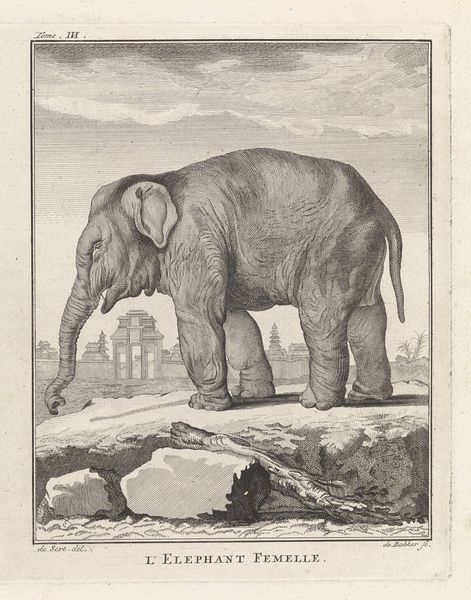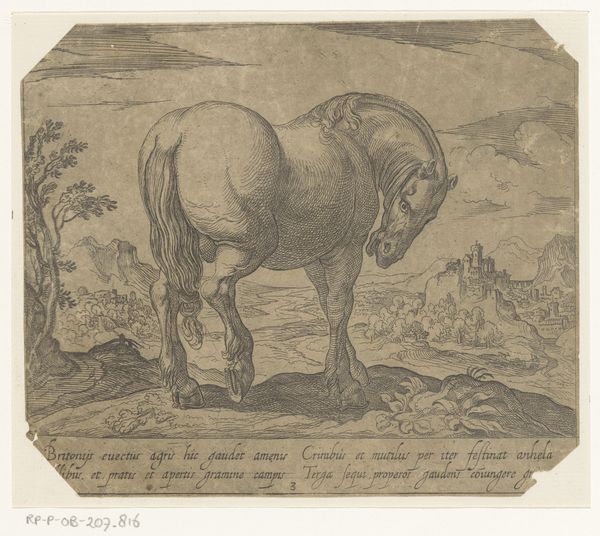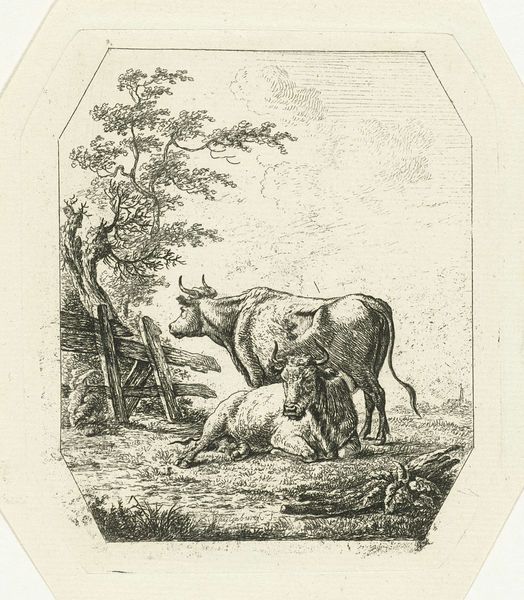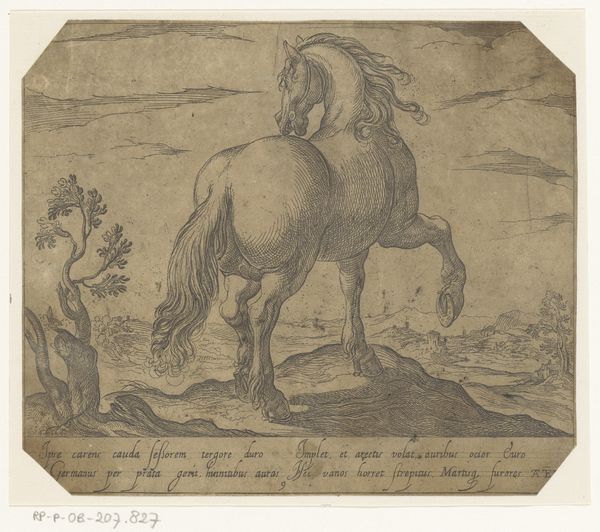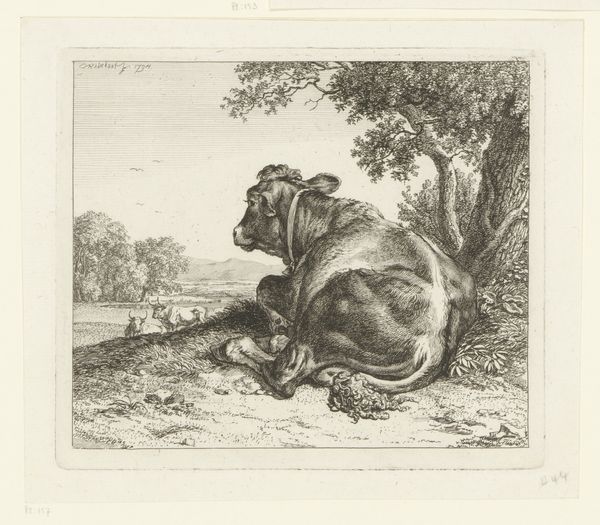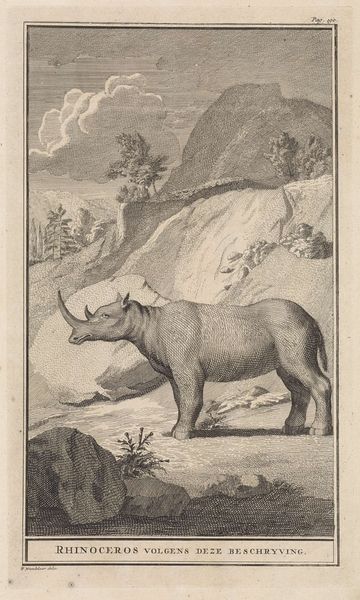
Rhinoceros in a Landscape within an Ornamental Frame 1730
0:00
0:00
drawing, print, dry-media, graphite
#
drawing
#
baroque
# print
#
landscape
#
figuration
#
dry-media
#
graphite
Dimensions: sheet: 11 5/16 x 8 in. (28.7 x 20.3 cm)
Copyright: Public Domain
Editor: This striking drawing, "Rhinoceros in a Landscape within an Ornamental Frame," was created around 1730 by Johann Melchior Füssli. It's done with graphite, ink, and perhaps some wash. I’m intrigued by the contrast between the realistic rhino and the elaborate frame. What can you tell me about it? Curator: Notice how the rhino itself becomes a manufactured object, situated within the very clear signifiers of wealth and power through its depiction and ornamental framing? The process here is key: graphite and ink, readily available materials, transform the exotic animal into a commodity, consumed visually. What does the act of depicting, framing, and disseminating an image like this say about colonial power? Editor: So, the artist isn't just drawing a rhino, he's drawing an idea of a rhino, an idea shaped by...trade? Acquisition? Curator: Exactly. Think about where Füssli might have encountered a rhino. Not in his backyard! These animals were shipped across continents, displayed as curiosities, commodities even. The printmaking process itself—a method of reproduction—speaks to a desire to possess and distribute knowledge, or perhaps control the narrative of the "exotic". Look closely at the rhino’s hide; it almost resembles armor. Is this about accurate depiction, or something more? Editor: I see what you mean. The skin almost looks like it’s been manufactured, given those patterns. Curator: It highlights how representations aren't neutral. Materials and techniques have meaning; choices about line, shading, the *very act* of creating and reproducing an image impacts its message. Editor: I had only been looking at it formally, but thinking about it in terms of how it was made and how people consumed it really opens it up. Curator: Indeed. And recognizing that connection between artistic processes and broader social forces offers us all another lens through which to view, appreciate and better understand such material culture.
Comments
No comments
Be the first to comment and join the conversation on the ultimate creative platform.


